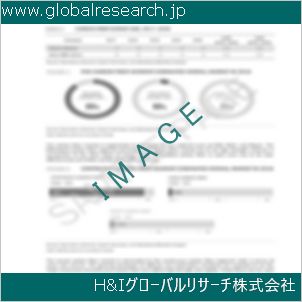Table of Contents
1 Industry Overview of Dibutyladipate
1.1 Definition and Specifications of Dibutyladipate
1.1.1 Definition of Dibutyladipate
1.1.2 Specifications of Dibutyladipate
1.2 Classification of Dibutyladipate
1.3 Applications of Dibutyladipate
1.3.1 Nuclear Application
1.3.2 Non-Nuclear Application
1.4 Industry Chain Structure of Dibutyladipate
1.5 Industry Overview and Major Regions Status of Dibutyladipate
1.5.1 Industry Overview of Dibutyladipate
1.5.2 Global Major Regions Status of Dibutyladipate
1.6 Industry Policy Analysis of Dibutyladipate
1.7 Industry News Analysis of Dibutyladipate
2 Manufacturing Cost Structure Analysis of Dibutyladipate
2.1 Raw Material Suppliers and Price Analysis of Dibutyladipate
2.2 Equipment Suppliers and Price Analysis of Dibutyladipate
2.3 Labor Cost Analysis of Dibutyladipate
2.4 Other Costs Analysis of Dibutyladipate
2.5 Manufacturing Cost Structure Analysis of Dibutyladipate
2.6 Manufacturing Process Analysis of Dibutyladipate
3 Technical Data and Manufacturing Plants Analysis of Dibutyladipate
3.1 Capacity and Commercial Production Date of Global Dibutyladipate Major Manufacturers in 2023
3.2 Manufacturing Plants Distribution of Global Dibutyladipate Major Manufacturers in 2023
3.3 R&D Status and Technology Source of Global Dibutyladipate Major Manufacturers in 2023
3.4 Raw Materials Sources Analysis of Global Dibutyladipate Major Manufacturers in 2023
4 Capacity, Production and Revenue Analysis of Dibutyladipate by Regions, Types and Manufacturers
4.1 Global Capacity, Production and Revenue of Dibutyladipate by Regions 2019-2024
4.2 Global and Major Regions Capacity, Production, Revenue and Growth Rate of Dibutyladipate 2019-2024
4.3 Global Capacity, Production and Revenue of Dibutyladipate by Types 2019-2024
4.4 Global Capacity, Production and Revenue of Dibutyladipate by Manufacturers 2019-2024
5 Price, Cost, Gross and Gross Margin Analysis of Dibutyladipate by Regions, Types and Manufacturers
5.1 Price, Cost, Gross and Gross Margin Analysis of Dibutyladipate by Regions 2019-2024
5.2 Price, Cost, Gross and Gross Margin Analysis of Dibutyladipate by Types 2019-2024
5.3 Price, Cost, Gross and Gross Margin Analysis of Dibutyladipate by Manufacturers 2019-2024
6 Consumption Volume, Consumption Value and Sale Price Analysis of Dibutyladipate by Regions, Types and Applications
6.1 Global Consumption Volume and Consumption Value of Dibutyladipate by Regions 2019-2024
6.2 Global and Major Regions Consumption Volume, Consumption Value and Growth Rate of Dibutyladipate 2019-2024
6.3 Global Consumption Volume and Consumption Value of Dibutyladipate by Types 2019-2024
6.4 Global Consumption Volume and Consumption Value of Dibutyladipate by Applications 2019-2024
6.5 Sale Price of Dibutyladipate by Regions 2019-2024
6.6 Sale Price of Dibutyladipate by Types 2019-2024
6.7 Sale Price of Dibutyladipate by Applications 2019-2024
6.8 Market Share Analysis of Dibutyladipate by Different Sale Price Levels
7 Supply, Import, Export and Consumption Analysis of Dibutyladipate
7.1 Supply, Consumption and Gap of Dibutyladipate 2019-2024
7.2 Global Capacity, Production, Price, Cost, Revenue, Supply, Import, Export and Consumption of Dibutyladipate 2019-2024
7.3 USA Capacity, Production, Price, Cost, Revenue, Supply, Import, Export and Consumption of Dibutyladipate 2019-2024
7.4 EU Capacity, Production, Price, Cost, Revenue, Supply, Import, Export and Consumption of Dibutyladipate 2019-2024
7.5 China Capacity, Production, Price, Cost, Revenue, Supply, Import, Export and Consumption of Dibutyladipate 2019-2024
7.6 Japan Capacity, Production, Price, Cost, Revenue, Supply, Import, Export and Consumption of Dibutyladipate 2019-2024
8 Major Manufacturers Analysis of Dibutyladipate
8.1 Manufacturer One
8.1.1 Company Profile
8.1.2 Product Picture and Specifications
8.1.2.1 Type I
8.1.2.2 Type II
8.1.2.3 Type III
8.1.3 Capacity, Production, Price, Cost, Gross and Revenue
8.1.4 Contact Information
8.2 Manufacturer Two
8.2.1 Company Profile
8.2.2 Product Picture and Specifications
8.2.2.1 Type I
8.2.2.2 Type II
8.2.2.3 Type III
8.2.3 Capacity, Production, Price, Cost, Gross and Revenue
8.2.4 Contact Information
8.3 Manufacturer Three
8.3.1 Company Profile
8.3.2 Product Picture and Specifications
8.3.2.1 Type I
8.3.2.2 Type II
8.3.2.3 Type III
8.3.3 Capacity, Production, Price, Cost, Gross and Revenue
8.3.4 Contact Information
8.4 Manufacturer Four
8.4.1 Company Profile
8.4.2 Product Picture and Specifications
8.4.2.1 Type I
8.4.2.2 Type II
8.4.2.3 Type III
8.4.3 Capacity, Production, Price, Cost, Gross and Revenue
8.4.4 Contact Information
8.5 Manufacturer Five
8.5.1 Company Profile
8.5.2 Product Picture and Specifications
8.5.2.1 Type I
8.5.2.2 Type II
8.5.2.3 Type III
8.5.3 Capacity, Production, Price, Cost, Gross and Revenue
8.5.4 Contact Information
…
9 Marketing Trader or Distributor Analysis of Dibutyladipate
9.1 Marketing Channels Status of Dibutyladipate
9.2 Traders or Distributors with Contact Information of Dibutyladipate by Regions
9.3 Ex-work Price, Channel Price and End Buyer Price Analysis of Dibutyladipate
9.4 Regional Import, Export and Trade Analysis of Dibutyladipate
10 Industry Chain Analysis of Dibutyladipate
10.1 Upstream Major Raw Materials Suppliers Analysis of Dibutyladipate
10.1.1 Major Raw Materials Suppliers with Contact Information Analysis of Dibutyladipate
10.1.2 Major Raw Materials Suppliers with Supply Volume Analysis of Dibutyladipate by Regions
10.2 Upstream Major Equipment Suppliers Analysis of Dibutyladipate
10.2.1 Major Equipment Suppliers with Contact Information Analysis of Dibutyladipate
10.2.2 Major Equipment Suppliers with Product Pictures Analysis of Dibutyladipate by Regions
10.3 Downstream Major Consumers Analysis of Dibutyladipate
10.3.1 Major Consumers with Contact Information Analysis of Dibutyladipate
10.3.2 Major Consumers with Consumption Volume Analysis of Dibutyladipate by Regions
10.4 Supply Chain Relationship Analysis of Dibutyladipate
11 Development Trend of Analysis of Dibutyladipate
11.1 Capacity, Production and Revenue Forecast of Dibutyladipate by Regions and Types
11.1.1 Global Capacity, Production and Revenue of Dibutyladipate by Regions 2024-2029
11.1.2 Global and Major Regions Capacity, Production, Revenue and Growth Rate of Dibutyladipate 2024-2029
11.1.3 Global Capacity, Production and Revenue of Dibutyladipate by Types 2024-2029
11.2 Consumption Volume and Consumption Value Forecast of Dibutyladipate by Regions, Types and Applications
11.2.1 Global Consumption Volume and Consumption Value of Dibutyladipate by Regions 2024-2029
11.2.2 Global and Major Regions Consumption Volume, Consumption Value and Growth Rate of Dibutyladipate 2024-2029
11.2.3 Global Consumption Volume and Consumption Value of Dibutyladipate by Types 2024-2029
11.2.4 Global Consumption Volume and Consumption Value of Dibutyladipate by Applications 2024-2029
11.3 Supply, Import, Export and Consumption Forecast of Dibutyladipate
11.3.1 Supply, Consumption and Gap of Dibutyladipate 2024-2029
11.3.2 Global Capacity, Production, Price, Cost, Revenue, Supply, Import, Export and Consumption of Dibutyladipate 2024-2029
11.3.3 USA Capacity, Production, Price, Cost, Revenue, Supply, Import, Export and Consumption of Dibutyladipate 2024-2029
11.3.4 EU Capacity, Production, Price, Cost, Revenue, Supply, Import, Export and Consumption of Dibutyladipate 2024-2029
11.3.5 China Capacity, Production, Price, Cost, Revenue, Supply, Import, Export and Consumption of Dibutyladipate 2024-2029
11.3.6 Japan Capacity, Production, Price, Cost, Revenue, Supply, Import, Export and Consumption of Dibutyladipate 2024-2029
12 New Project Investment Feasibility Analysis of Dibutyladipate
12.1 New Project SWOT Analysis of Dibutyladipate
12.2 New Project Investment Feasibility Analysis of Dibutyladipate
13 Conclusion of the Global Dibutyladipate (CAS 105-99-7) Industry 2024 Market Research Report
| ※参考情報 アジピン酸ジブチル(Dibutyladipate)は、化学式 C18H34O4 を持つ有機化合物であり、一般的には工業・商業用途として利用されています。この化合物は、アジピン酸のジブチルエステルであり、その構造的特性によって様々な物理的および化学的特性を持っています。アジピン酸ジブチルは、主にプラスチックやコーティング材、接着剤などの製造において、柔軟剤や可塑剤として使用されます。 アジピン酸ジブチルは、無色透明の液体であり、特徴的な甘い香りがすることが知られています。その粘度は比較的低く、他の溶剤やポリマーマトリックスと混和しやすい特性があります。これにより、アジピン酸ジブチルは、多くの合成樹脂やプラスチック材料の加工において非常に重要な役割を果たしています。例えば、ポリ塩化ビニル(PVC)の加工において、部材の柔軟性を高めるために使用されることが一般的です。 また、アジピン酸ジブチルは、熱安定性と化学的安定性も兼ね備えており、高温下でもその性質を保つことができるため、多様な環境条件下で利用されています。特に、プラスチック製品が直面する可能性のある環境ストレスに耐える能力は、その使用において重要な要因となります。さらに、アジピン酸ジブチルは生分解性の特性を持ち、一部の用途において環境への配慮が求められる現在のトレンドにも適応できる潜在力を秘めています。 用途においては、アジピン酸ジブチルは、主にプラスチック業界、特にPVC製品の柔軟剤として使用されます。具体的には、電線被覆、ラバー、シート、フィルムなどの製造において、その必要な柔軟性や強度を賄うために添加されることが一般的です。また、コーティング剤や接着剤においても、成膜性や接着性を向上させるために用いられることがあります。これによって、最終製品の性能向上が図られ、市場での競争力を高める要因となります。 アジピン酸ジブチルに関する関連技術は、主に化学合成や材料工学、環境科学など多岐にわたります。特に、合成技術においては、アジピン酸とブチルアルコールを原料として、エステル化反応を行うことで得られます。この過程では、反応条件の最適化が重要であり、触媒の選定や温度管理が製品の品質に大きな影響を与えます。 最近の研究では、アジピン酸ジブチルの生分解性や環境への影響を評価する研究が進められており、持続可能な化学物質としての評価が高まっています。これに伴い、より環境に優しい合成ルートや用途開発も進行中であり、今後の展開に注目が集まっています。 最後にアジピン酸ジブチルの安全性についても触れておく必要があります。化学物質の取り扱いには注意が必要であり、特に長期間にわたる暴露が健康に及ぼす影響について研究が進められています。従って、取り扱いや保管に際しては、適切な安全対策を講じることが重要です。提供される安全データシート(SDS)を参照し、適切な情報を得ることが、作業環境でのリスクを軽減するために欠かせません。 以上のように、アジピン酸ジブチルはその独特な物理的・化学的特性を活かし、広範な用途で利用されています。また、持続可能性や環境保護の観点からも、今後の研究開発が期待される化合物と言えるでしょう。 |
❖ 免責事項 ❖
http://www.globalresearch.jp/disclaimer












